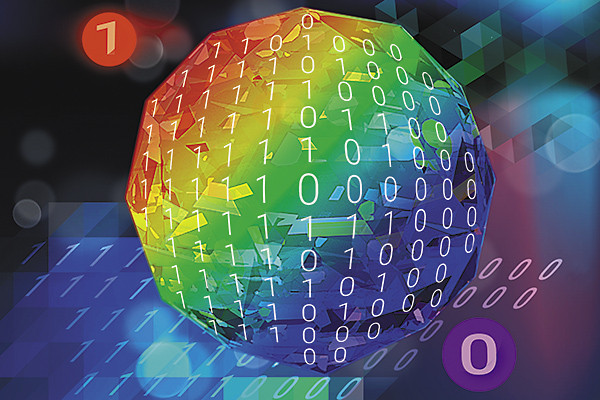Quantum computing represents one of the most exciting and promising areas of modern science and technology. While traditional computers use bits as basic units of information, quantum computers use quantum bits, or qubits, which have unique properties such as superposition and entanglement. These properties allow quantum computing to solve certain problems much faster and more efficiently than their classical counterparts. In this article, we will explore the evolution of quantum computing from theoretical foundations to practical applications, as well as the current state and future of this exciting field.
Theoretical foundations of quantum computing
Principles of quantum mechanics
To understand quantum computing, you need to familiarize yourself with the basics of quantum mechanics. Unlike classical mechanics, where objects have certain properties at each point in time, quantum mechanics describes a system using wave functions that give the probabilities of different outcomes. The key principles of quantum mechanics that underpin quantum computing are:
- Superposition: A quantum system can be in multiple states at the same time. For example, a qubit can be simultaneously in the state of 0 and 1 in certain proportions.
- Entanglement: Two or more quantum objects can be connected in such a way that the state of one object depends on the state of the other, regardless of the distance between them. This property allows quantum computers to perform calculations that cannot be done on classical computers.
- Measurement: When measured, the quantum system "collapses" into one of the possible states. This process entails a change in the state of the system, which is an important aspect in the construction of quantum algorithms.
Qubits and quantum operations
A qubit (or quantum bit) is the basic unit of information in a quantum computer. Unlike a classical bit, which can be either 0 or 1, a qubit can be in a state of 0, 1, or in any superposition of these states. This allows quantum computers to process a huge number of combinations at once.
Quantum operations (or quantum logic gates) act on qubits and change their states. These operations are similar to logical operations in classical computers, but use quantum principles to perform more complex calculations. Basic quantum operations include:
- Quantum gates: Mechanisms that change the state of qubits. Examples include Hadamard Gate, Pauli-X Gate, and CNOT Gate.
- Quantum algorithms: Programs that use quantum gates to solve problems. An example is Shor's algorithm for factoring numbers.
The Path to Practical Application
Early developments and theoretical achievements
The idea of quantum computing began to develop in the 1980s thanks to the work of Richard Feynman and David Deutsch. In 1981, Feynman proposed the use of quantum systems to simulate quantum processes, which became the basis for further research in this area. In 1994, Peter Shore presented his famous algorithm, which showed that quantum computers could efficiently solve problems related to the factorization of large numbers that are difficult to solve on classical computers.
Prototypes and first achievements
In the early 2000s, the first physical prototypes of quantum computers began to appear. One of the significant advances has been the creation of quantum systems with multiple qubits, such as ion-based quantum computers, semiconductor qubits, and quantum dots.

Problems and challenges
Despite its impressive achievements, quantum computing faces several important challenges:
- Decoherence: Qubits are subject to environmental influences, which can lead to loss of information. This problem is known as decoherence and requires the development of technologies to isolate and protect qubits.
- Quantum Computing Error: Quantum computing is prone to errors that need to be corrected using quantum correction codes and other methods.
- Scalability: Building quantum computers with a large number of qubits and integrating them into practical systems remain complex technical challenges.
Current trends and future
Technology development
Now, quantum computing continues to develop at a rapid pace. Companies and startups are engaged in the development of new quantum technologies and algorithms. The main areas of research include:
- Increasing the number of qubits: Various approaches to increasing the number of qubits and improving their fault tolerance are being explored.
- Quantum Communication and Quantum Network: Development of technologies for the secure transmission of quantum information through quantum communication channels.
- Combining quantum and classical computing: Ways to integrate quantum computing with classical systems to solve real-world problems are explored.
Applications and potential
Potential applications of quantum computing cover a wide range of areas, including:
- Cryptography: Quantum computers can threaten existing cryptography systems, but they can also lead to the creation of new, more secure methods.
- Modeling molecules and materials: Quantum computers can be used to simulate complex chemical processes and create new materials with unique properties.
- Optimization and logistics: Quantum algorithms can help solve complex optimization problems, such as scheduling and resource allocation.
Conclusion
The path from theory to practice in quantum computing is complex and multifaceted. The theoretical foundations of quantum mechanics have provided a powerful toolkit for the creation of quantum computing systems. Prototypes and early advances have shown that quantum computers can solve problems that cannot be solved with classical technology. However, there are still many technical and practical challenges to overcome before quantum computers become an everyday tool.
The future of quantum computing promises to be exciting and revolutionary, opening up new horizons for science, engineering, and technology. With each new advancement, we get closer to realizing the potential of quantum computing and its impact on our world.
